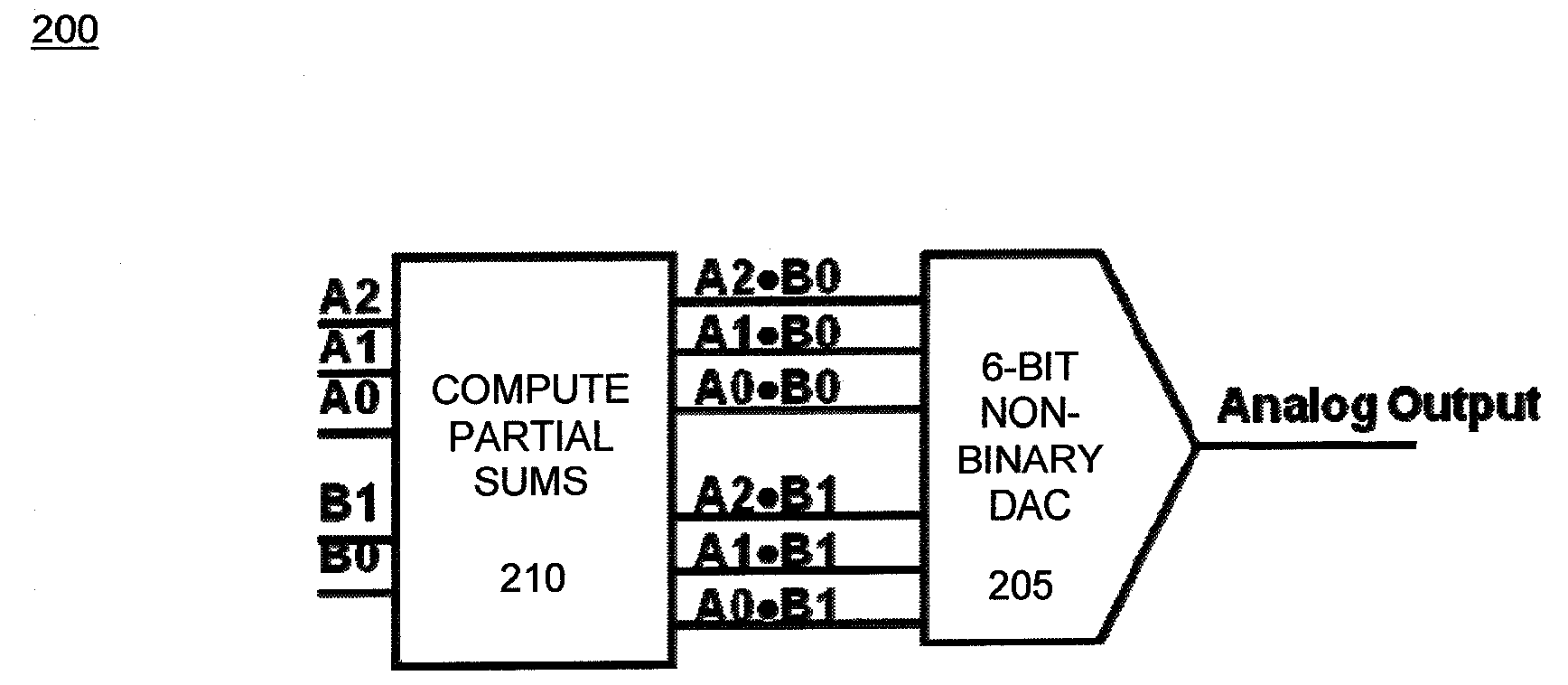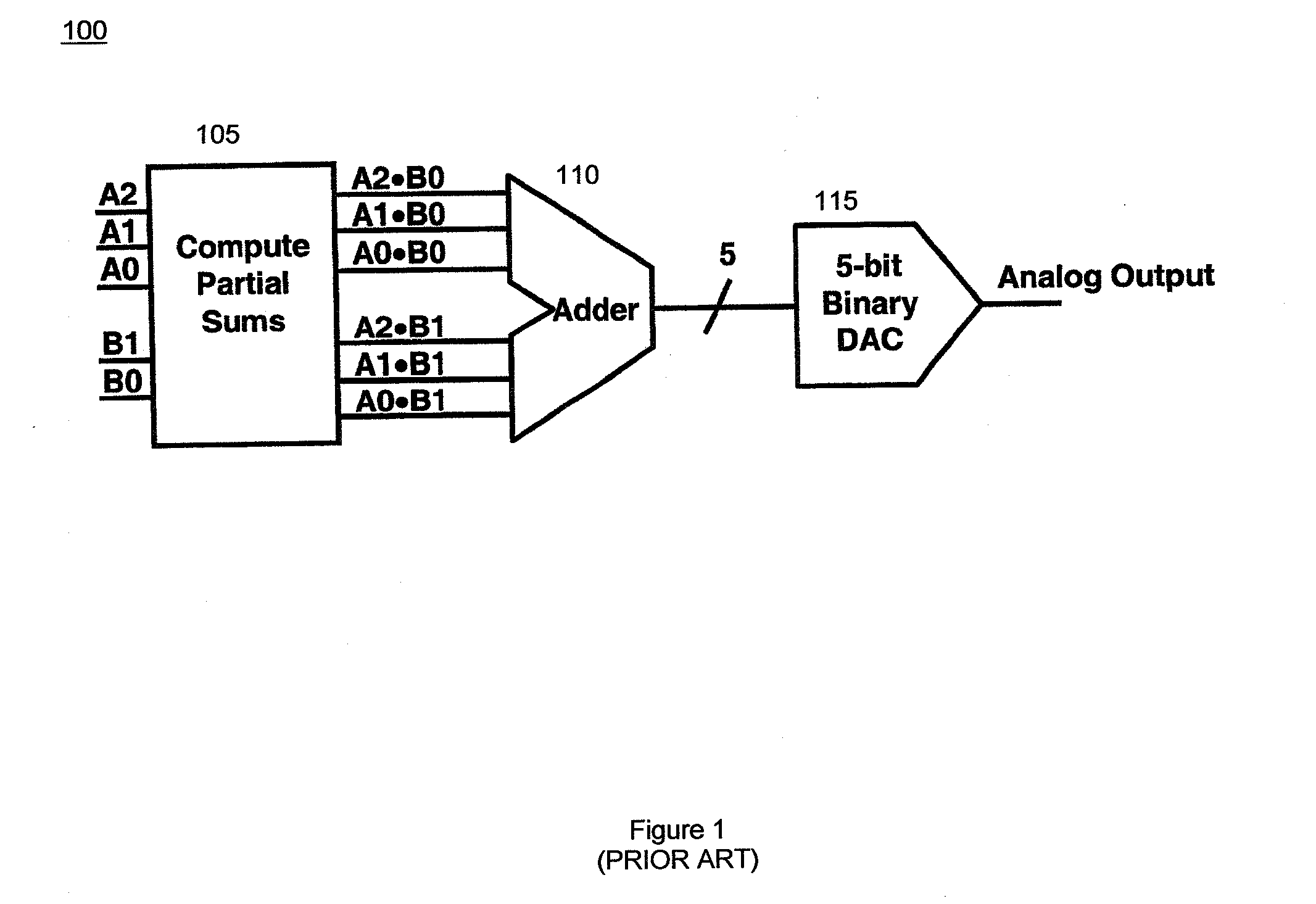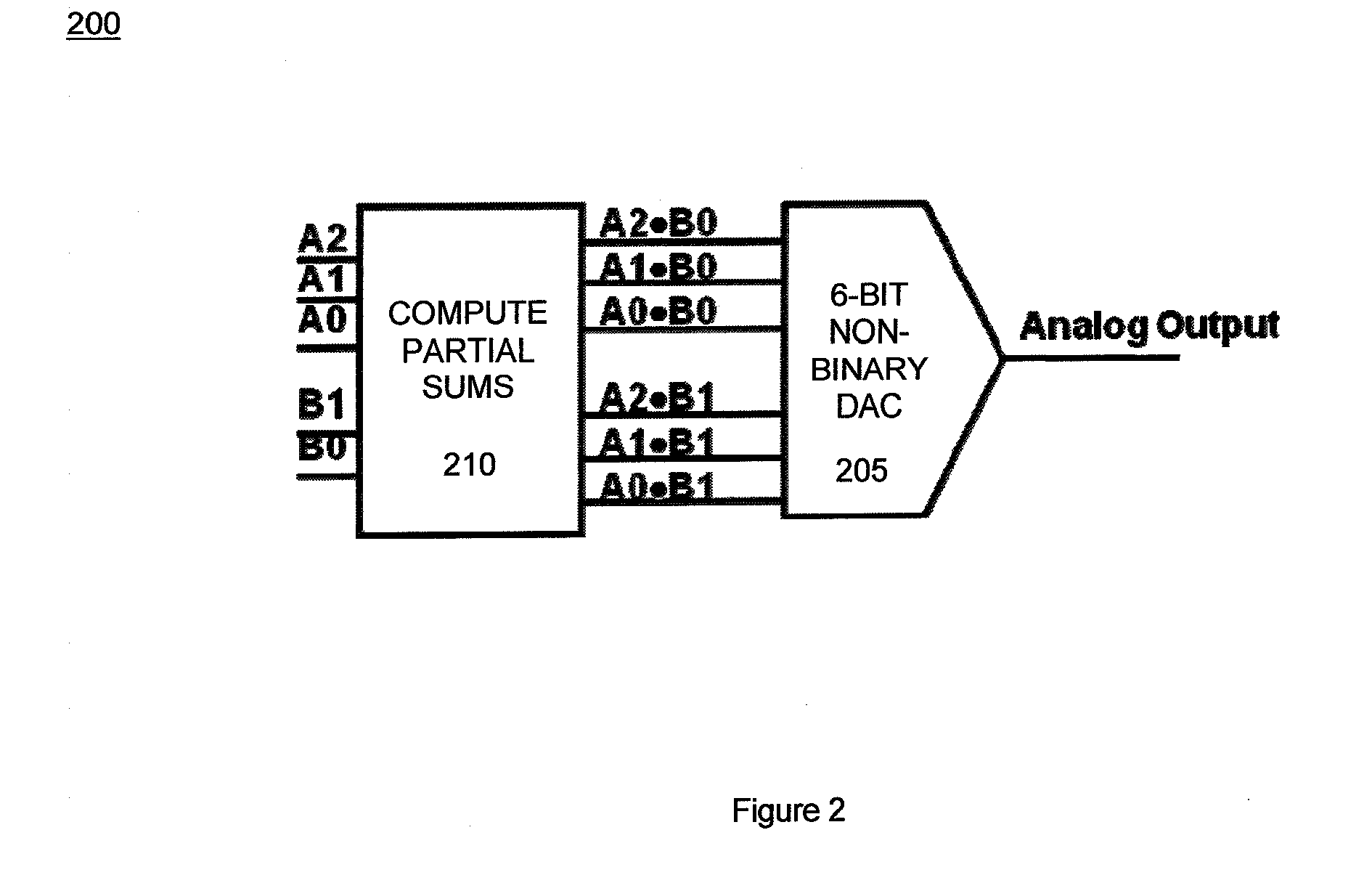Multiplying-adding return to zero digital to analog converter circuit and method
a technology return circuit, applied in the field of digital to analog converter, can solve the problems of increasing the power consumption of the circuit, reducing the operating speed, and high power consumption of achieve the effect of reducing the switching glitches in the output of the dac and removing the digital adder circuitry
- Summary
- Abstract
- Description
- Claims
- Application Information
AI Technical Summary
Benefits of technology
Problems solved by technology
Method used
Image
Examples
Embodiment Construction
Multiplying-Adding DAC
[0040]The multiplying-adding DAC eliminates digital adder circuitry. Less complex logic is used, circuitry is faster and power consumption is lower from reduced gate count. The non-binary DAC reduces skew by eliminating the weight of 16. Overall current is reduced by 10 weights, since the 16 weight is removed and extra 2 and 4 weights are added. Examples are given for multiplying a 3-bit binary number by a 2-bit binary number; however, there are no limitations to the bit-widths of the numbers to be multiplied. The multiplying-adding DAC method can be scaled up or down in bit-width by feeding the DAC with partial sums and adjusting the DAC weights accordingly. An analog to digital converter (ADC) can be placed after the DAC to generate a digital output. The approach is not limited to DDS circuits; it can be used in any circuit where a digital or analog multiplication output is desired. The following figures include embodiments demonstrating the multiplying-addin...
PUM
 Login to View More
Login to View More Abstract
Description
Claims
Application Information
 Login to View More
Login to View More - R&D
- Intellectual Property
- Life Sciences
- Materials
- Tech Scout
- Unparalleled Data Quality
- Higher Quality Content
- 60% Fewer Hallucinations
Browse by: Latest US Patents, China's latest patents, Technical Efficacy Thesaurus, Application Domain, Technology Topic, Popular Technical Reports.
© 2025 PatSnap. All rights reserved.Legal|Privacy policy|Modern Slavery Act Transparency Statement|Sitemap|About US| Contact US: help@patsnap.com



